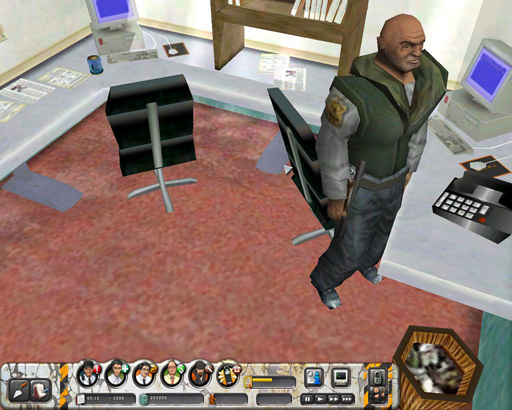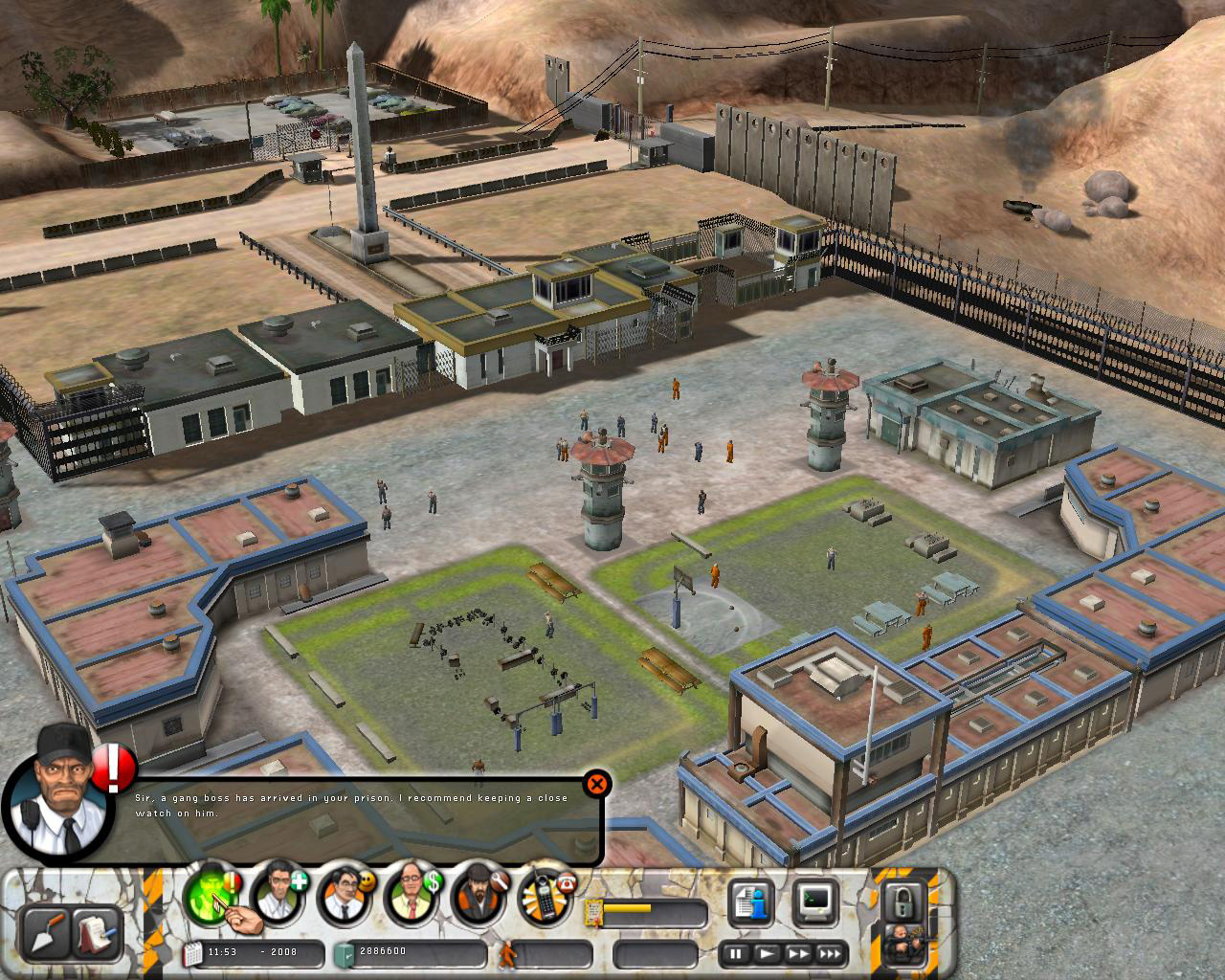

Yes, once the prison is built, an astonishing number of variables play against each other as the game’s algorithm calculates prisoner unrest, rates of rehabilitation, gang warfare, etc. What I want to call your attention to is how Prison Tycoon abstracts the prison from its historical and sociological context. Choosing among cellblocks, laundry rooms, administrative offices, guard towers, factory shops, chapels, infirmaries, exercise yards, mess halls, and so on, the player eventually creates a toyworld prison, which is soon populated by inmates of varying degrees of unsavoriness. The game begins as many simulations do, with a blank slate, in which your prison has yet to be built. Or, to frame the game using the terms from Gilles Deleuze that I introduced last month, Prison Tycoon is a simulation about disciplinary society expressed through a medium befitting a society of control.

I’m going to set aside for a moment the poor gameplay and instead focus on how this game operates in the intersection between containment and control. Yet, I think the game is representative of what we might call a simulation sensibility, the idea that there is nothing that can’t be modeled by a computer and played by a human. The game is ridden with bugs and laden with a clunky interface. It’s a budget title, the kind you might find in the discount rack at Target-which in fact is where I found my copy.
PRISON TYCOON 4 PC CONTROLS MANUAL
As the game manual explains, “Build and run your very own correctional facility from the comfort of your own home…with even greater attention to detail and realism!” Unlike SimCity, Prison Tycoon 2 (and there are actually four games in the series) was never a bestseller. You might think of Prison Tycoon as The Sims: Prison Edition. But now I want to turn to a game obviously influenced by Will Wright’s work but which focuses directly on prisons themselves: Prison Tycoon 2. The jails in SimCity do not teach us anything about jails, about their management or their occupants.
.jpg)
While I mentioned the jails in SimCity as an example of the latter case, those jails are merely one variable in a complex urban ecology, a function in a game algorithm that also includes power plants, hospitals, police stations, freeways, and so on. In the second kind of game, the player tries to manage the prison. In the first kind of game, the player tries to escape the prison. In my previous post on Play the Past I introduced the idea of virtual prisons, noting that prisons appear in videogames as either spaces of confinement or spaces of control.


 0 kommentar(er)
0 kommentar(er)
